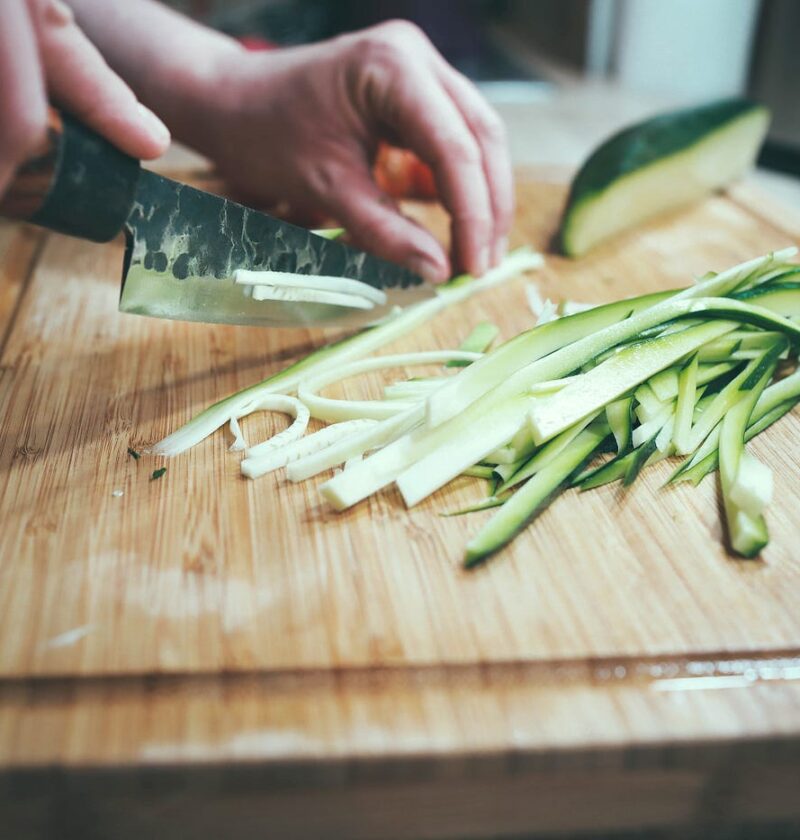In the realm of culinary arts, slicing is an elemental technique that transcends the boundaries of cuisine, weaving itself into the fabric of gastronomic excellence. This delicate artform involves the skillful and precise cutting of ingredients to achieve uniformity in size and shape. It is the foundation upon which many culinary creations stand, dictating not only the aesthetics but also the texture and flavor of a dish. From the graceful glide of a razor-sharp blade through the supple flesh of fruits and vegetables to the rhythmic precision required for crafting a sashimi platter, slicing is a cornerstone skill for chefs around the world.
At its core, slicing is a harmonious dance between the cook and the knife. The choice of blade is paramount, as different knives cater to various tasks. A chef’s knife, with its versatile edge and ergonomic design, is the maestro of the slicing symphony. Its broad, tapered blade grants it the dexterity to handle an array of ingredients, from dicing onions with a deft finesse to effortlessly slicing through the firm skin of root vegetables.
Achieving uniformity in slices is the hallmark of a skilled chef. This consistency not only enhances the visual appeal of a dish but also ensures even cooking, allowing flavors to meld seamlessly. In the case of dishes like ratatouille or scalloped potatoes, where layers of thinly sliced vegetables are arranged in an intricate pattern, precision in slicing elevates the final presentation from mere sustenance to a visual masterpiece.
Furthermore, slicing influences the texture of a dish, an often underestimated aspect of culinary craftsmanship. A well-sliced ingredient can transform a dish from mundane to sublime. Take, for instance, the ethereal wafer-thin slices of raw fish in a traditional sashimi platter. Each slice is a delicate morsel, its tender texture allowing it to dissolve on the palate, revealing the essence of the sea. Contrastingly, the hearty crunch of julienned vegetables in a stir-fry adds a dynamic element, providing a textural interplay that is as pleasing to the mouth as it is to the eye.
The art of slicing extends beyond the realm of fruits and vegetables. In the world of charcuterie, where the craft of preserving and aging meats is revered, slicing holds a place of paramount importance. A precisely sliced piece of cured ham reveals the culmination of months, or even years, of patient aging. Each translucent ribbon of meat, marbled with delicate veins of fat, showcases the expertise of the artisan.
In baking, slicing plays a pivotal role in the creation of pastries and bread. The difference between a lackluster loaf and a crusty, golden boule lies in the finesse of the baker’s blade. A precise slash on the surface of the dough determines its expansion during baking, giving rise to an artful, rustic pattern.
Slicing is not confined to the professional kitchen alone. In every home, it is an essential skill that empowers individuals to create meals with a touch of elegance and precision. It invites creativity, allowing home cooks to experiment with new flavors, textures, and presentations.
Conclusion
In conclusion, slicing is a cornerstone of culinary artistry, a skill that transcends borders and cultures. It is the symphony that brings together the cook, the knife, and the ingredients, weaving them into a harmonious tapestry of flavors and textures. From the delicate precision required in sushi-making to the rustic charm of a hand-sliced loaf of bread, the art of slicing is a testament to the craftsmanship and passion that defines the culinary world.


